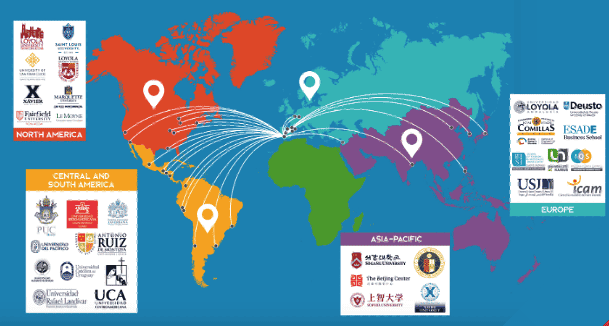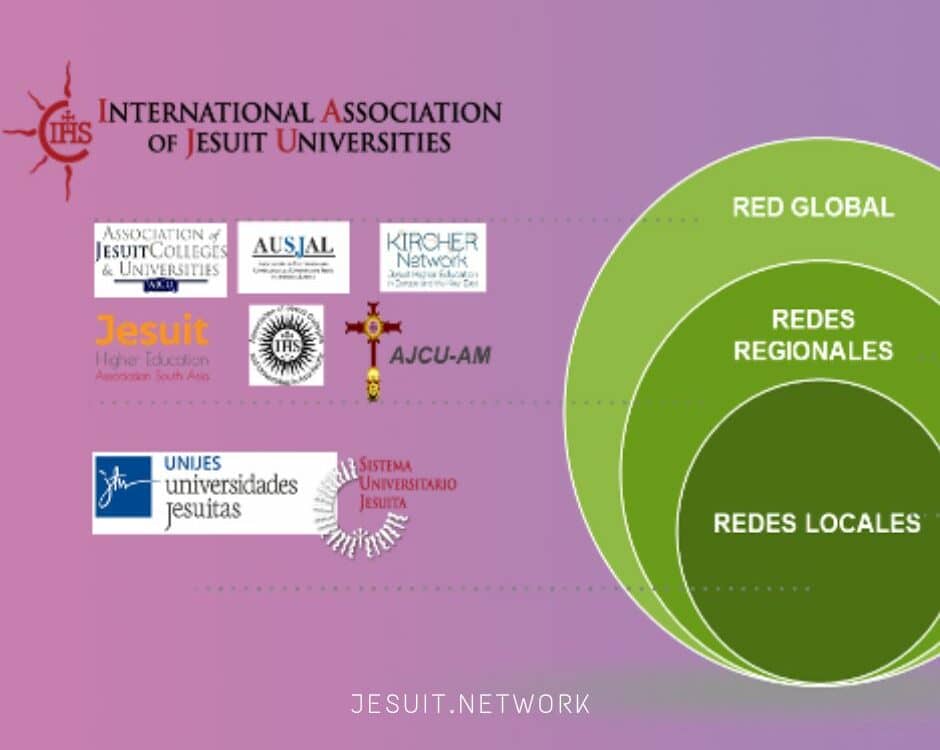This website uses cookies so that we can provide you with the best user experience possible. Cookie information is stored in your browser and performs functions such as recognising you when you return to our website and helping our team to understand which sections of the website you find most interesting and useful.
A Vision on Higher Ed Jesuit Networks
“From poetry to prose: Challenges to make networks work. The University Case” is the title of my talk that I had the honour of giving to the Jesuits of UNIJES during their annual meeting last March 2023. In the talk I wanted to share my reflections on networking in Jesuit universities, not from ideals, but from the experience and complexity of university work. That is, about what helps and what doesn’t help in networking.
In a series of three posts, I will share with you the main reflections of this conference. This first article is entitled “A Vision on Jesuit University Networks”. In the second, I will present the main “Challenges and Risks of Jesuit University Networks and the conditions for their functioning. Finally, in the third, I will summarise some of the “Lessons learned and good practices for the creation and functioning of Jesuit university networks”.
Let us start with the context.
Context of the networks and some premises
The last two decades have witnessed a steady growth in the creation of Jesuit networks, as well as a strengthening and transformation of existing ones. In the case of higher education, new networks have been created, such as IAJU, the Kircher Network, IAJBS and IAJES, while others such as AJCU and AUSJAL have been institutionally strengthened and reached higher levels of agency. What is the reason for this growth and why have these networks been created?

Several factors have contributed to this process of expansion. Although it is not the focus of this article, I would like to highlight three of them. First, globalisation has increased the need for greater collaboration and networking among Jesuit works, sectors and provinces.
Despite its benefits, globalisation has deepened social and environmental problems in several countries. The greater interdependence it has generated means that many of the social problems to which Jesuit works and provinces must respond (poverty, inequality, exclusion, migration, socio-environmental justice, etc.) have become regionalised and even globalised. Hence, in order to respond to this greater complexity and real demand, the Society of Jesus has fostered collaborative networking, especially in its social sector (For example, with visionary intuition, in 1980 Fr Pedro Arrupe SJ, Superior General of the Society of Jesus, created the Jesuit Refugee Service to coordinate a global humanitarian response to the refugee situation. He also highlights the transformation).
In the case of Jesuit universities, the challenge of offering comprehensive quality education and solid, impactful research is linked to academic work in national and international networks. The growing internationalisation of higher education is a clear example of this process. Except for the risk of becoming an excellent parochial school, a Jesuit higher education institution that does not participate in international networks is not plausible.
Secondly, as mission requires greater collaboration, the development of communication technologies and social networks has facilitated and encouraged networking.
Finally, while the mission of the Society of Jesus is universal, the early and emphatic call of General Congregations (GCs) for greater collaboration and networking stands out. Thus, in 1995, GC 34 indicated the usefulness of networking by stating that “in order to take greater advantage of all the possibilities we have as an international apostolic body, new global and regional networks must be created”. GC 35 (2008) also noted that “we recommend that Jesuit governance at all levels explore ways to develop more effective networking among Jesuit-related apostolic works”.
While GC 36 goes further in highlighting the usefulness of networking not only to better respond to the mission “as we share resources and commitments at the local level, so as to serve the universal mission together”, but also as “an opportunity to strengthen our identity”. It also goes a step further by calling on Fr General and his councillors to study what the networks are doing and to encourage their growth (Decree 2).
What are they and when is it appropriate to create Jesuit university networks?
Talking about networks is already part of our everyday language in the works of the Society of Jesus. It was not always so. I remember how in 1999 we had to explain what we meant by the idea of transforming AUSJAL from an association into a network of networks. For many, the concept of network referred to computer networks. For others, it referred to fishing nets; very much in line with our Christian identity. We will see below the similarities of university networks to a fishing net. Some said it sounded like a mafia.
Networks are a unique type of organisation with a complex operating model. They are platforms of people and institutions with horizontal structures and cross-cutting work. Unlike bureaucratic Weberian structures, they are non-hierarchical and do not operate on the basis of orders and directives and therefore have few command and control mechanisms. Networks are people-centred (no members, no network); they are based on listening, sharing and building trust. Therefore, networks require multiple collaboration mechanisms and intensive work to create links and build trust between the people in them (networking). Hence, the creation and management of international networks is complex and time-consuming.
This complexity is even greater in university networks, where individual academic reputations, differences between disciplines and faculty organisation do not facilitate interdisciplinary work. In addition, the institutional differences among Jesuit universities around the world and the cultural diversity of their members, while being both a richness and a comparative advantage, increase the complexity of network functioning.
If all of the above is true, you may ask, does it make sense to create international networks in Jesuit higher education, especially when there are other prestigious and better-resourced networks? The answer is yes, and it is based on the role of networks in strengthening identity and fulfilling mission.
Networks are a means to fulfil the mission of Jesuit universities. They are not an end in themselves. Unlike other university networks, Jesuit networks are created to support and add value to the work of universities or to undertake new projects for the mission. Therefore, their raison d’être and specificity lies in their contribution to the renewal and fulfilment of the university mission, as Jesuit institutions. This is the specific added value of such networks; a value which, given the synergies and multiplier effects, can be greater than the sum of the contributions of the member institutions. That is, in networking 2+2 can be greater than 4.
However, like all instruments, networks have advantages and disadvantages. They are not a panacea and sometimes networks do not work. When this happens, it not only results in a loss of network resources, but also reduces the confidence of managers and academics in the effectiveness of networking.
The process of creating a network depends on context, people and time. It is unreasonable to try to copy the structure of any international higher education network. Organisational culture tends to preserve the status quo and resists change. However, based on our very Ignatian identity and mission, culture can be modified to become an ally of change, if the right strategy and incentives (especially outcomes that add value to all institutions) are identified, agreed and implemented.
What are Jesuit higher education networks for?
Collaborative networking:
- Enables responses to regional and global challenges.
- It enables inter-university training and comparative research; it is a key instrument for internationalisation.
- It strengthens the capacities of institutions, without competing with their own autonomy.
- It strengthens their social capital and sense of belonging; it broadens the horizon of institutions.
- It facilitates shared learning. Institutions learn from each other; from each other’s good practices, methodologies and ways of proceeding.
- It allows taking advantage of synergies and economies of scale in management areas.
- It increases the common identity in the public image of the universities and centres of the Society of Jesus.
- Facilitates national and international impact.
Local institutions achieve greater regional and international visibility and importance. - Networks have easier access to funding agencies.
The different Jesuit university networks develop a variety of joint projects and initiatives, both in the areas of training and research, as well as in actions of public presence and taking advantage of economies of scale in areas of management. In the following table, I have summarised in seven categories the main joint projects that these networks develop. Not all networks implement these seven types of initiatives. This depends on the strength of the network, its level of consolidation and agency.
Main projects and initiatives developed by Jesuit university networks

In the next post we will discuss the challenges and risks of Jesuit university networks and the conditions for their functioning.





